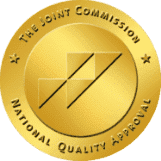How to Prepare for a Neurofeedback Session?
How to Prepare for a Neurofeedback Session?
How to Prepare for a Neurofeedback Session
Find out about neurofeedback therapy and how to prepare for treatment.

Article Contents
What Is Neurofeedback Therapy?
Do you feel like you’re constantly struggling to keep up with life? Are you overwhelmed by stress and anxiety? Maybe it’s time to try neurofeedback therapy. This relatively new treatment can help train your brain to manage your mental health better. After reading this guide, you’ll know what to expect and how to get the most out of this type of biofeedback therapy. Every human’s brain is composed of over one-hundred billion neurons. Neurons or information transmitting cells are influenced by different neurochemicals. That is why mental health medications are used to control neurochemical levels and interactions within the brain. Neurofeedback therapy or biofeedback was introduced to respond to the brain’s feedback regulation system. In early studies, researchers found that influencing the brain with biofeedback could change a person’s mental processes. For instance, one study found that altering the temperature of an individual’s hands could promote relaxation. Essentially, neurofeedback is used to train the human brain to self-regulate healthily.1What Is Neurofeedback Therapy Used For?
Neurofeedback therapy, commonly called neurotherapy, treats various mental health diagnoses. Most of the research has focused on epilepsy, autism, insomnia, ADD/ADHD, PTSD, anxiety, depression, and addiction.1Does Neuro Therapy Really Work?
Yes, neuro biofeedback therapy works by training the brain to change how it functions. Neurofeedback therapy uses the reward pathways of the brain to modify behavior. For example, in a neurofeedback training session, the individual could gain points in the brain-training game for desirable activity and lose points if an unwanted activity occurs.2Neurofeedback Therapy Types
Although research doesn’t suggest that one neurofeedback therapy is better than any of the others, trained clinicians can use multiple types of neurofeedback training depending on the individual’s needs and logistical factors. The following sections will explore the main types of neurotherapy or EEG biofeedback therapy. 3Frequency/Power Neurofeedback
Out of all the therapy types we’ll discuss, frequency training is the most established neuro biofeedback therapy. Frequency training seeks to discourage specific brainwave frequencies while reinforcing others. The person’s energy state and brainwaves are measured during a session to gain audio and visual feedback.4Slow Cortical Potential Neurofeedback (SCP-NF)
Slow cortical potential training is still being researched and isn’t currently considered an effective treatment for specific mental health disorders. Cortical potentials or SCPs are based on electrical activities in the brain. Typically, the electrical activities studied are less than 1Hz.5Low-Energy Neurofeedback System (LENS)
LENS is a type of neurofeedback therapy in which the clinician measures an individual’s brainwaves before sending tiny electromagnetic pulses to the location where the brainwaves were measured. The electromagnetic pulses stimulate the brain, offset what it’s doing, and promote flexibility. This type of therapy is still being researched to determine condition-specific efficacy.6Hemoencephalography (HEG) Neurofeedback
HEG neurofeedback therapy is currently used to diagnose and treat attention deficit hyperactivity disorder (ADHD). This type of neurotherapy uses infrared light to measure oxygenation within the skull.7Live Z-Score Neurofeedback
Z-score neurofeedback therapy training typically uses two or more electrodes. Once these electrodes are secured to the individual’s head, continuous calculations compare how the brain functions with different variables such as power or asymmetries. The feedback is then compared to a database and shifted the individual’s EEG profile towards “normal” baselines.8Low-Resolution Electromagnetic Tomography (LORE-TA)
LORE-TA neurotherapy is quite similar to frequency training. A person’s EEG is partially restricted to examine cortex surface and event-related potentials or ERPs. This neurotherapy usually requires at least nineteen sensors and is based on an EEG analysis.9Functional Magnetic Resonance Imaging (fMRI)
Magnetic resonance imaging (MRI) is a standard radiology tool that creates high-resolution images between tissues. Functional MRI (fMRI) analyzes brain activity and changes in response to stimuli.10Neurofeedback Therapy Side Effects
 As with any medical intervention, educating yourself about possible side effects and dangers is essential. The following sections will highlight neuro biofeedback side effects one should be aware of.
As with any medical intervention, educating yourself about possible side effects and dangers is essential. The following sections will highlight neuro biofeedback side effects one should be aware of.
What Are the Possible Side Effects of Neurofeedback Therapy?
Typically, neurofeedback training (NFT) doesn’t have adverse side effects.11 However, in some rare cases, neurofeedback therapy side effects could include emotional distress, vocal tics, regression, somatic symptoms, muscle twitches, and mental fogginess.12At Home Neurofeedback Therapy Dangers
Most neurofeedback therapy side effects occur when an untrained individual administers therapy. For that reason, it’s critical to receive EEG biofeedback therapy in a well-monitored clinical environment. Educated and licensed professionals have the training to administer effective brainwave biofeedback.12How to Prepare for A Neurofeedback Therapy Session
Before starting EEG neurofeedback therapy, it’s essential to understand what it is, the types available, and possible side effects. Since we’ve already covered those topics, the next step is to select a neurofeedback therapy program. The following sections will explore the bio neurofeedback therapy process so that you can prepare for treatment.Before Your First Neurofeedback Session
Generally, an initial consultation will take place before beginning exclusive neurofeedback therapy. The consultation may occur in person or over the phone. This is an excellent opportunity to ask questions about the neurotherapy process.Typical Neurofeedback Session Steps You May Experience
Read on to learn about the steps individuals experience during neurofeedback therapy. This can make your first visit more relaxing and effective.Set Goals for Treatment
During neurofeedback therapy, the practitioner and individual work together to identify goals. Typically, the practitioner will use these goals to create an individual-driven treatment plan.
Measure Brain Wave Activity
During the first few sessions, the practitioner places sensors and develops a baseline understanding of the individual’s brainwaves, average levels, and patterns. Generally, the individual is playing a video game or watching a movie during this step.
Find Help Now
Train The Brain with Positive Feedback
Next, the practitioner will begin treatment using the individual’s optimal brainwave setting and a neurofeedback therapy machine. When desired or positive patterns are identified, the video game or movie will be altered. For example, alterations can include a larger movie viewing window or faster speed in the game.
Repeat Training
The individual’s brain will automatically adjust throughout treatment and sessions based on repetition. After some time, the individual’s brain associates specific brainwaves with desirable outcomes.
Neurofeedback Therapy at Iris Healing®
Iris Healing® is the leading neurofeedback therapy provider in Los Angeles, offering adult and teen neurofeedback therapy. Iris Healing® embraces a holistic approach to recovery from addiction, mental health, and co-occurring disorders.What To Expect During the Session?
During a neurotherapy session at Iris Healing®, individuals can expect a private consultation, expert assessment, and EEG appointment.Why Choose Our Neurofeedback Program?
The Iris Healing® neurotherapy program provides individuals with high-quality medical treatment and neurofeedback protocols to reach the best outcomes. The Iris Healing® team believes problems must be tackled from the root with a whole-person treatment approach.Call Us Today
You may be wondering, is there neurofeedback therapy near me? Iris Healing® is conveniently located in the Woodland Hills area of Los Angeles. For more information about services, benefits, and neurofeedback therapy, don’t hesitate to get in touch with our knowledgeable and friendly team members today. It’s never too late to begin the journey towards recovery!Resources
- https://www.nami.org/Blogs/NAMI-Blog/August-2021/Neurofeedback-A-Complement-to-Talk-Therapy-and-Medication?gclid=Cj0KCQiA3-yQBhD3ARIsAHuHT67G6ilubQcUsy4tqMN9pMMrXIXTQSl_PKCSF0BqgFrkd01yKnj04woaAjBwEALw_wcB
- https://sitn.hms.harvard.edu/flash/2017/brain-training-future-psychiatric-treatment/
- https://neurofeedbackalliance.org/types-of-neurofeedback/
- https://neurofeedbackalliance.org/frequency-training/
- https://neurofeedbackalliance.org/slow-cortical-potential-training/
- https://neurofeedbackalliance.org/lens-lens-ochs/
- https://www.ncbi.nlm.nih.gov/pmc/articles/PMC4869785/
- https://neurofeedbackalliance.org/z-score-training/
- https://neurofeedbackalliance.org/sloreta/
- http://fmri.ucsd.edu/Research/whatisfmri.html
- https://isnr.org/what-is-neurofeedback
- https://www.researchgate.net/publication/233167031_Adverse_reactions_and_potential_iatrogenic_effects_in_neurofeedback_training




